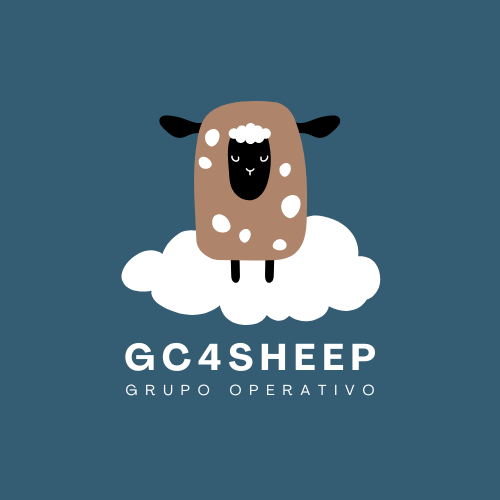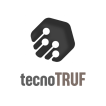
GC4SHEEP Operational Group: Federated data cloud platform with an artificial intelligence layer for the genetic and reproductive improvement of dairy sheep
- Type Operational group
- Status Filled
- Execution 2022 -2025
- Assigned Budget 599.022,08 €
- Scope Supraautonómico
- Autonomous community Castilla y León; Castilla - La Mancha; Galicia; País Vasco
- Main source of financing CAP 2014-2020
- Project website https://gc4sheep.com
Project focused on digitalization and innovation to improve reproduction and fertility through data processing and digitization using artificial intelligence.
The GC4SHEEP project aims to collect joint data on Spain's main sheep breeds with the goal of improving reproduction and fertility through predictive models for better decision-making. It will focus on key parameters such as semen selection and the use of extenders to improve semen quality.
However, to analyze data, it is necessary to generate it. Within the framework of this project, data on reproductive management will be generated, linked to the improvement of female and male selection in flocks. For example, correlations related to the MIR spectra of milk and body condition, analysis of the reproductive performance of the best males based on jumping speed, correlations of buck and lamb quality based on feed, improvements in extender quality to improve semen viability through solutions, and the quality of the boars themselves to define culling based on big data. This set of analyses will allow progress towards sheep farming 4.0, which will translate into greater profitability for sheep farms. The economic evaluation of the digital solution as a predictive tool for fertility and reproduction, key to assessing improved farm profitability, is aimed at improving farm management through artificial intelligence. The data will be stored on the cloud platform based on the project's data lake.
The GC4SHEEP project has developed a comprehensive data management and analysis system to improve sheep reproduction and fertility. The main outcome has been the creation of a secure and collaborative digital platform that allows farms to store, analyze, and share reproductive data. Using this tool, artificial intelligence-based studies have been conducted to better understand the factors that influence fertility. Among the most relevant advances, the use of MIR milk data allows pregnancy diagnosis one month earlier than with traditional techniques, reducing costs and enabling faster decision-making. Furthermore, it has been shown that the evolution of ewes' body condition during pregnancy clearly influences fertility outcomes, making good nutritional management essential.
At the same time, the rams' reproductive performance has been analyzed, demonstrating that variables such as jumping rate and semen quality allow for better selection of breeding males. The best feeding practices for rams and young females have also been identified, improving testicular development and insemination results. Overall, GC4SHEEP offers a practical solution for sheep producers: a simple and accessible system that allows them to anticipate reproductive problems, make better management decisions, and improve farm profitability through the efficient use of data.
- General objective:
- The goal of GO GC4SHEEP is to increase the profitability of sheep farms through a data-driven transformation connected to innovations in fertility improvement.
- Specific objectives:
- Data analysis on a federated sharing platform with individualized security and powered by artificial intelligence to achieve predictions aligned with improvements in farm profitability.
- Analysis of innovative solutions to improve fertility, focusing on the management of males and females to generate useful data for decision-making.
- Other Objectives
- Technical coordination to monitor indicators and demonstrate improvements in profitability with the proposed innovative solutions.
- Sheep cloud development and secure federated platform
- Analysis of MIR and body condition data to assess improvements in fertility and analysis of male reproductive performance data, based on jumping rhythm, nutrition and semen viability for stallion selection.
- Coordination and management of the operational group and profitability analysis
The R1 outcome of the GC4SHEEP project was the development of a federated digital platform that allows sheep farms to securely store, manage, and analyze their reproductive data. This platform is based on a data lake system and a federation model that allows information to be shared between associations without losing ownership or control of the data. Its main practical advantages include the possibility of performing predictive analyses using artificial intelligence, helping to improve decision-making regarding reproduction, genetic selection, and nutritional management. It also incorporates a digital signature system that guarantees the security, authenticity, and traceability of the shared information. For farmers, using this platform represents a clear opportunity to improve the efficiency and profitability of their farms. It allows for early identification of reproductive problems, improved mating planning, comparative analysis between seasons, and optimization of male and female management. Furthermore, its structure is prepared to integrate new data or analysis modules in the future, becoming a key tool for moving toward more digital, efficient, and sustainable sheep farming.
The R2 result of the GC4SHEEP project has demonstrated the potential of using milk MIR spectra in conjunction with body condition analysis as predictive tools to improve reproductive management. It has been verified that, using artificial intelligence, MIR spectra make it possible to predict whether a ewe is pregnant up to 35 days in advance, significantly improving efficiency compared to traditional methods such as ultrasound. Furthermore, it has been confirmed that the evolution of body condition during gestation is directly related to fertility: ewes that lose condition show a lower pregnancy rate. This data allows the farmer to react in a timely manner through nutritional adjustments. Both approaches offer noninvasive, cost-effective, and easy-to-implement methods. By facilitating early diagnoses, they help reduce unproductive days, better plan inseminations, and optimize the use of boars. This improves farm profitability and reduces resource waste. This result marks a key step toward smarter, data-driven reproductive management tailored to the real-world conditions of each herd.
The R3 outcome of the GC4SHEEP project focused on a practical and applied analysis of sire reproductive performance, using jump rate and other variables associated with semen collection as indicators. The analysis has allowed the identification of profiles of more fertile and efficient sires, facilitating better selection and management of breeders in insemination centers. This knowledge provides farmers with a concrete tool to optimize the profitability of their farms: selecting sires not only based on genetics but also on reproductive behavior and semen quality. Furthermore, knowing the actual data of each sire allows for better scheduling of insemination campaigns, optimizing resources and reducing costs. The integration of this data into the GC4SHEEP platform allows for real-time monitoring of each sire's performance, facilitating swift decision-making. With this approach, the project advances toward more efficient sheep reproduction, reducing errors, improving results, and supporting a precision livestock farming model based on objective data.
The R4 outcome of the GC4SHEEP project has made it possible to evaluate and demonstrate how the specific diet of young bucks and ewe lambs directly influences their reproductive development and fertility outcomes. Tailored feeding plans have been designed to optimize growth and testicular development in bucks and reproductive readiness in ewe lambs. The results show that a good nutritional plan improves weight, volume, and testicular quality in bucks, which translates into higher semen quality and better insemination rates. In the case of ewes, it ensures a more balanced development and greater reproductive capacity upon reaching adulthood. This outcome offers farmers a key practical recommendation: adapting the diet of young breeding animals not only improves animal health but also directly increases reproductive efficiency and farm profitability. Furthermore, it allows for optimizing the use of bucks in artificial insemination and reducing the number of animals culled due to poor performance.
The R5 outcome of the GC4SHEEP project focused on the development and testing of new extender solutions for the preservation and transport of sheep semen. These solutions allow for improved viability and quality of semen to be maintained for longer periods of time, expanding its potential uses and improving reproductive outcomes. Trials have shown that these improved extenders allow for higher semen motility rates and quality compared to conventional extenders, especially during long-term transport or storage situations. For farmers and insemination centers, the use of these new extenders offers clear advantages: greater flexibility in semen use, improved insemination results, and reduced losses due to poor quality. Furthermore, it allows for more advanced planning of breeding campaigns and improved logistics for semen doses. This advancement facilitates more efficient use of resources and supports more profitable and sustainable sheep reproduction.
The R6 outcome of the GC4SHEEP project was the integration of an advanced, artificial intelligence-based analysis system within the GC4SHEEP platform. This system allows farms to analyze their reproduction data, identify patterns, and make better-informed decisions. The tool allows farmers to create customized studies based on the variables they wish to analyze: breed, feed, insemination data, weather, body condition, etc. The system provides a visual and understandable analysis of the variables that most influence reproductive success. This represents a huge practical advantage: farmers can identify the key factors that improve or hinder their reproductive results and adapt their management strategies in real time. It also allows them to better plan breeding campaigns, reduce insemination costs, and increase farrowing rates. With this outcome, the GC4SHEEP project offers a practical, affordable, and adaptable digital solution that allows for the professionalization of sheep reproductive management and a move toward data-driven precision farming.
- Coordinator/entity name: GC4SHEEP
- Coordinator/entity email: hola@gc4sheep.com
- MSD Merck Sharp & Dohme Animal Health S.L.
- OVIGEN
- GENOVIS
- ASSAFE
- Confederación Asociaciónes criadores ovino latxa y carranzana (CONFELAC)
- Medrar Smart Solutions
- S.L.
- AGRAMA
- Centro tecnolóxico de telecomunicacións de galicia GRADIANT # Subcontratados: Universidad de León
- Instituto vasco de investigación y desarrollo agrario S.A
- (NEIKER)
- ARDIEKIN
- Instituto de ganadería de montaña CSIC ULE
- Universidad de Castilla La Mancha (UCLM)
- Instituto regional de investigación y desarrollo agroalimentario y forestal de Castilla-La Mancha (IRIAF)






